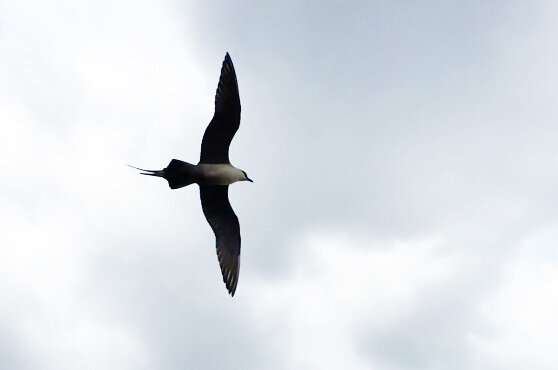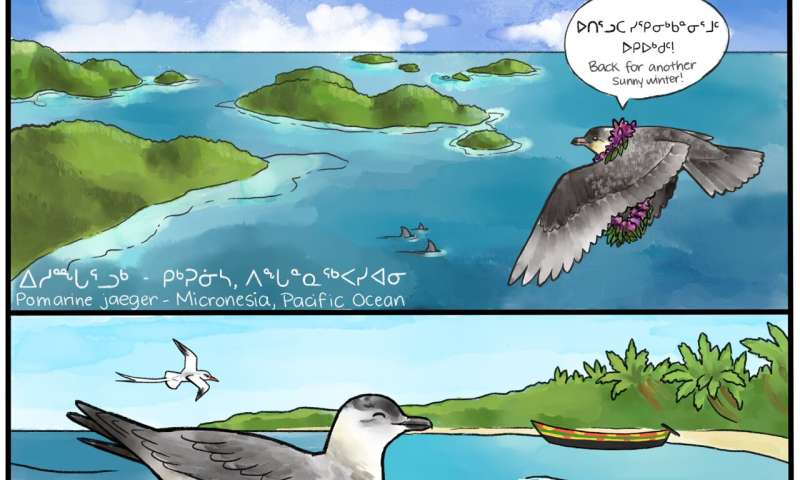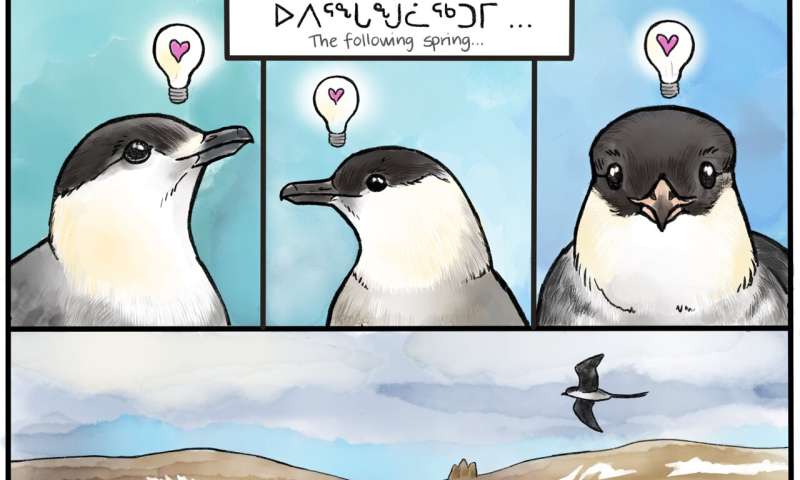Tracking of nearctic seabirds surprises scientists with diverse migratory paths from shared breeding site

As the Arctic and the oceans warm due to climate change, understanding how a rapidly changing environment may affect birds making annual journeys between the Arctic and the high seas is vital to international conservation efforts. However, for some Arctic species, there are still many unknowns about their migration routes. Using telemetry to solve some mysteries of three related seabird species—the pomarine jaeger, parasitic jaeger and long-tailed jaeger—scientists discovered they took different paths across four oceans from a shared central Canadian high Arctic nesting location. As predators and kleptoparasites that steal prey caught by other animals, jaegers are critical components of marine and terrestrial food webs. These new tracking data add to growing evidence linking marine biodiversity in the Arctic region and the high seas to inform large scale marine biological diversity management in areas beyond national jurisdiction.
Local coastal communities from the Arctic to the tropics are also connected through the expansive migrations of these three seabird species. To tell this story, the authors partnered with artist Laurel Mundy to create a comic version of the research, showing how these Arctic seabirds connect the world. The comic will be shared online in five languages (Inuktitut, Inuinnaqtun, English, French and Spanish) and print copies will be distributed to schools in the Canadian Arctic.
-

To tell this story, the authors partnered with artist Laurel Mundy to create a comic version of the research, showing how these Arctic seabirds connect the world. (Page 1 of 3). Credit: Artist Laurel Mundy/Smithsonian -

To tell this story, the authors partnered with artist Laurel Mundy to create a comic version of the research, showing how these Arctic seabirds connect the world. (Page 2 of 3). Credit: Artist Laurel Mundy/Smithsonian -

To tell this story, the authors partnered with artist Laurel Mundy to create a comic version of the research, showing how these Arctic seabirds connect the world. (Page 3 of 3). Credit: Artist Laurel Mundy/Smithsonian
Polar systems of avian migration remain unpredictable. For seabirds nesting in the Nearctic, it is often difficult to predict which of the world's oceans birds will migrate to after breeding. Here we report on three related seabird species that migrated across four oceans following sympatric breeding at a central Canadian high Arctic nesting location. Using telemetry, we tracked pomarine jaeger (Stercorarius pomarinus, n=1) across the Arctic Ocean to the western Pacific Ocean; parasitic jaeger (S. parasiticus, n=4) to the western Atlantic Ocean, and long-tailed jaeger (S. longicaudus, n=2) to the eastern Atlantic Ocean and western Indian Ocean. We also report on extensive nomadic movements over ocean during the post-breeding period (19,002 km) and over land and ocean during the pre-breeding period (5,578 km) by pomarine jaeger, an irruptive species whose full migrations and nomadic behavior have been a mystery. While the small sample sizes in our study limit the ability to make generalizable inferences, our results provide a key input to the knowledge of jaeger migrations. Understanding the routes and migratory divides of birds nesting in the Arctic region has implications for understanding both the glacial refugia of the past and the Anthropocene-driven changes in the future.
Autumn-Lynn Harrison, lead author and research ecologist for the Smithsonian Conservation Biology Institute's Migratory Bird Center says "these three related seabird species left their shared summer island home in the Canadian Arctic to take wildly different migration routes across four of the world's oceans. Anyone that's ever taken a different route than the rest of their family can relate to this amazing migration story. In this golden age of animal tracking, birds still have the ability to surprise us."
The research was published in Ecology and Evolution.
More information: Autumn‐Lynn Harrison et al, Sympatrically breeding congeneric seabirds ( Stercorarius spp.) from Arctic Canada migrate to four oceans, Ecology and Evolution (2021). DOI: 10.1002/ece3.8451
Journal information: Ecology and Evolution
Provided by Smithsonian National Zoological Park





















